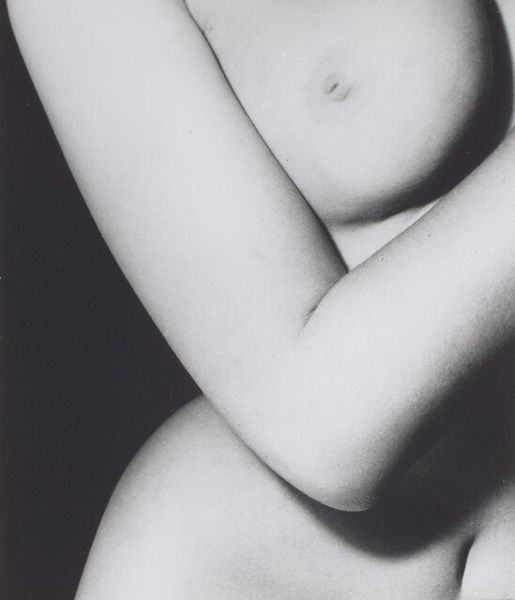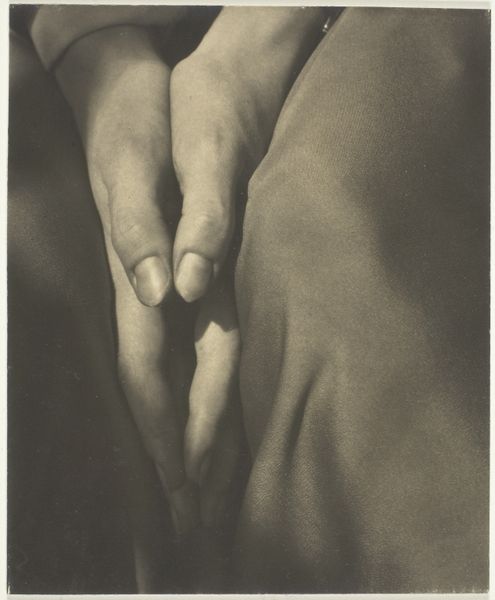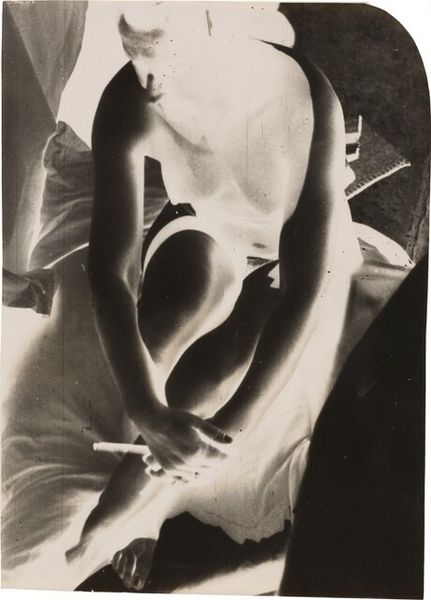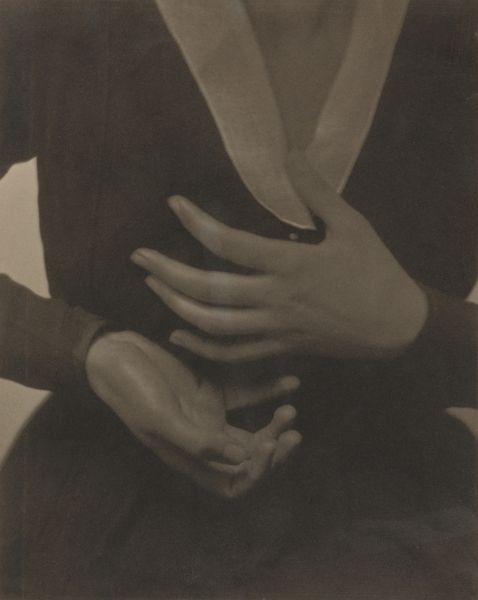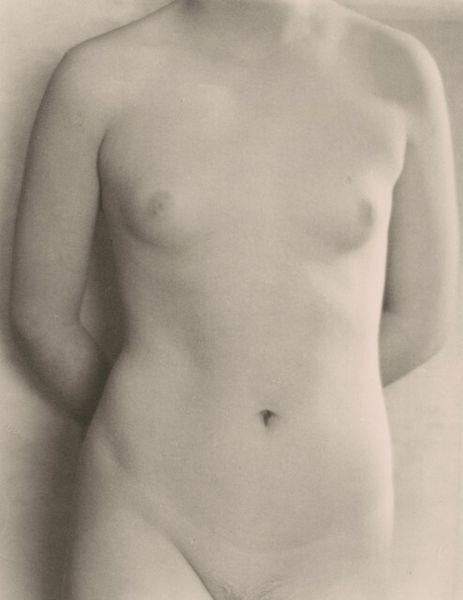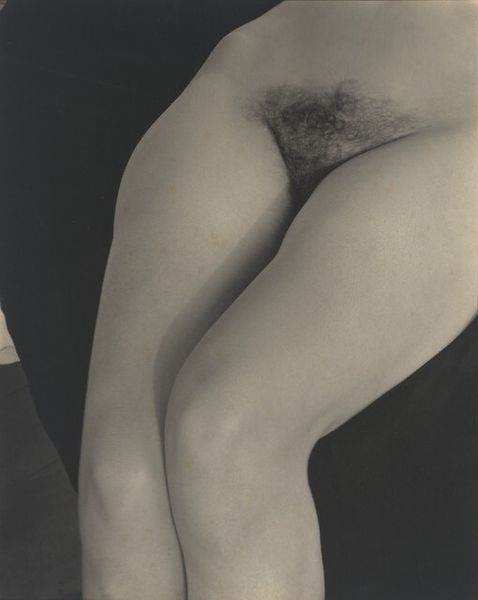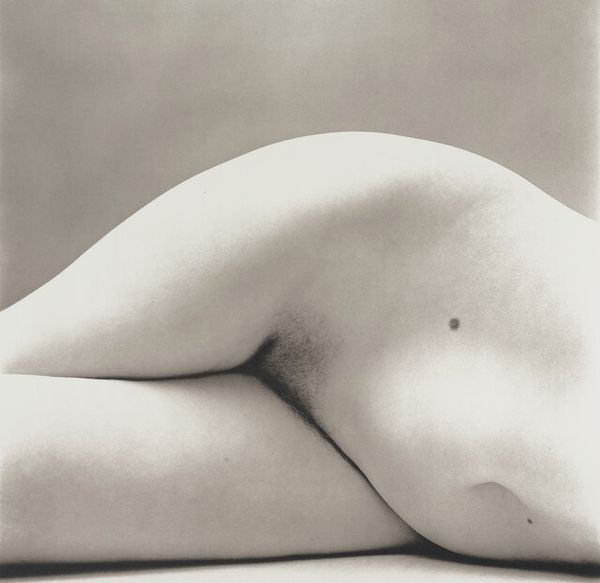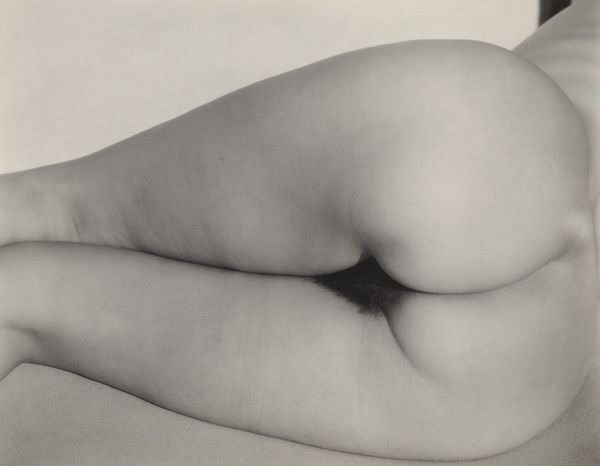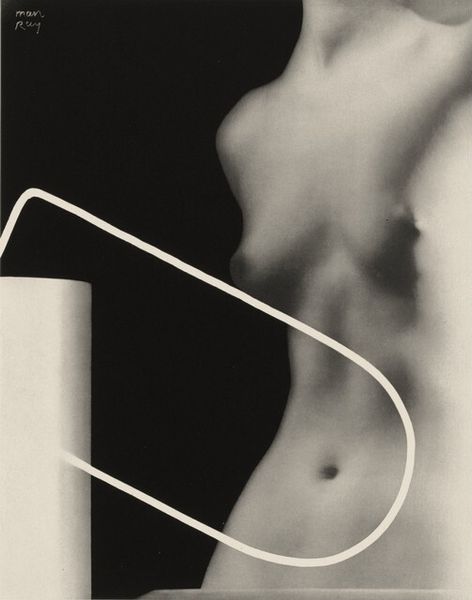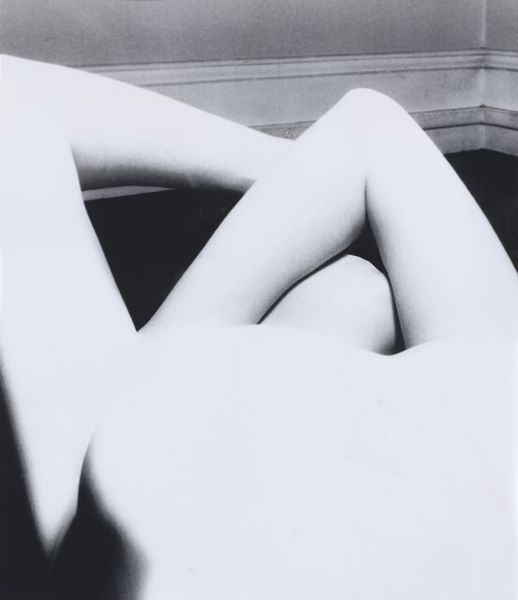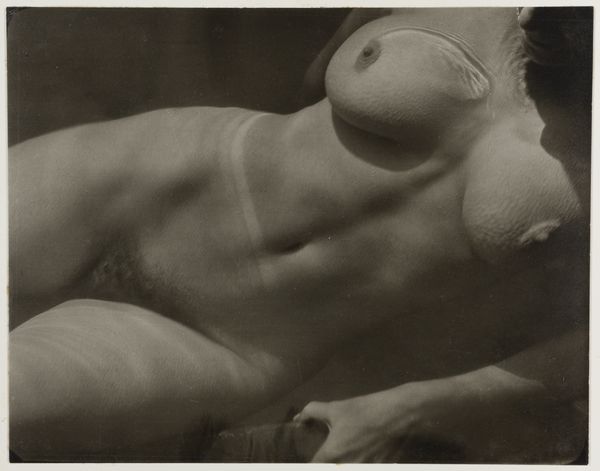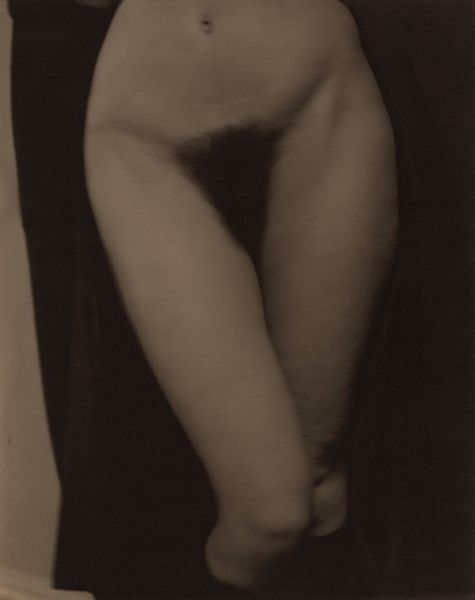
photography, gelatin-silver-print
#
art-deco
#
figure photograph
#
figuration
#
photography
#
gelatin-silver-print
#
nude
#
realism
Dimensions: image: 39 × 25.7 cm (15 3/8 × 10 1/8 in.)
Copyright: National Gallery of Art: CC0 1.0
Editor: This gelatin-silver print, “Nu (Nude),” was created in 1929 by Yvonne Chevalier. It feels incredibly intimate, almost sculptural in the way the light plays across the form. How do you interpret this work? Curator: I see this work as part of a broader trend in the early 20th century where the nude photograph became a site for exploring both artistic expression and societal attitudes toward the female body. Chevalier's choice of gelatin-silver print aligns her with a generation pushing photography towards fine art status. What’s interesting is thinking about its exhibition history – where would this have been displayed in 1929, and what kind of audience would have viewed it? Editor: So, was this a subversive image at the time, challenging established norms, or was it more accepted because it was presented as art? Curator: It’s a bit of both, I think. The 1920s were a period of changing social mores, with a growing fascination with the body, fueled by things like the rise of advertising. But presenting a nude, especially one by a female photographer, always carried a risk of being viewed as improper. The location and the intent behind displaying something like this would influence the discourse around the imagery itself. Galleries often acted as mediators, granting respectability that other contexts might not have offered. Editor: That makes a lot of sense. I hadn’t really thought about the role of the gallery in shaping how viewers understand an artwork. Curator: It's crucial! These spaces dictate not only who sees the art but how they are invited to see it. Museums and galleries create the narratives that shape our cultural memory and therefore shape how we understand Chevalier's art, or any art, and its place within our world. Editor: It really reframes how I look at even just this one photograph. Thank you! Curator: It's fascinating how photography allowed artists to capture the body in a more direct and intimate manner, while at the same time raising all kinds of new questions about authorship, representation, and the public role of art. Food for thought!
Comments
No comments
Be the first to comment and join the conversation on the ultimate creative platform.
